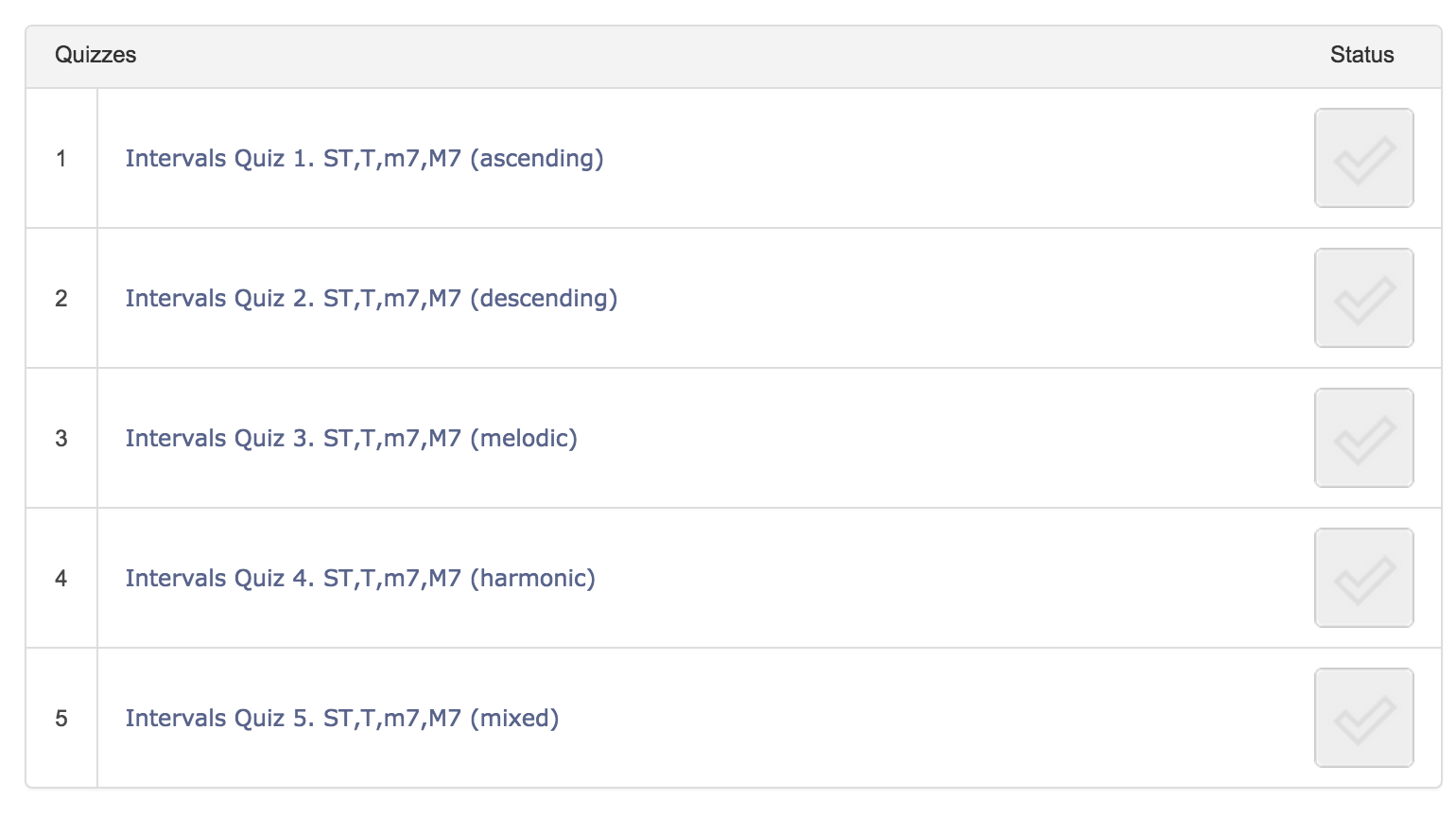
Interval Recognition 2
Practise recognising different types of interval by ear
(part two).
After completing this module: you will be able to reliably recognise all the intervals of the octave, adding tri-tones, major and minor sixths and sevenths and perfect octaves.
In this module you’ll learn the remaining intervals of the octave:
- Tri-tone
- Minor Sixth
- Major Sixth
- Minor Seventh
- Major Seventh
You’ll also have the chance to test yourself on these new intervals alongside those you’ve already learned in Interval Recognition 1, and see how they all fit into the major and minor scale.
Module Preview
Contents
- Introduction
- Dissonant Intervals
- Sevenths
- Sevenths and Inversions
- Recap
- Sixths
- Major Scale
- Minor Scale
- Everything!
How It Works
As you will have learned in the Learning Intervals module, each interval comes in three forms:
- Ascending (upwards)
- Descending (downwards)
- Harmonic (both notes together)
It’s generally easiest to start with the ascending form, then add in the descending form, and then finally try the harmonic form.
This module lets you practice the intervals in each of the three forms and also in combinations of the forms: “melodic” includes ascending and descending, and “mixed” includes all three.
In each lesson you’ll find some information about the intervals you’re learning, then some training tracks, some testing tracks, and a set of quizzes.
Step 1: Train
Use the “Training” tracks to listen carefully to each type of interval and tune your ear in to the different sounds.
Each time an interval is played, it is then announced so you know which intervals you’re hearing.
Step 2: Test
Once you think you’re getting a sense of each interval’s sound, listen to the corresponding “Test” tracks, which include a short pause after each interval.
During the pause, try to identify the interval you just heard.
You’ll hear the correct answer so you know if you got it right and have the chance to hear the interval again.
Step 3: Quiz
If you’re getting the answers right while listening to the “Testing” tracks, it’s time to check your abilities by taking the corresponding quiz.
Example Lesson: Sevenths and Inversions
When you go up a major seventh from a note, you reach the same note you would if you went down a semitone, but in a higher register.
This means that a major seventh in one direction (e.g. ascending) has a similar sound to a semitone in the other direction (e.g. descending).
Likewise for minor sevenths and tones. Going up a minor seventh sounds a bit like going down a tone, and going down a minor seventh sounds a bit like going up a tone.
When a pair of intervals has this relationship, we say that one is the “inversion” of the other.
The ascending and descending forms here should be a breeze for you now – but the harmonic form may cause trouble!
Training Tracks
Training 1. Ascending
Training 2. Descending
Training 3. Melodic
Training 4. Harmonic
Training 5. Mixed
Testing Tracks
Test 1. Ascending
Test 2. Descending
Test 3. Melodic
Test 4. Harmonic
Test 5. Mixed
Quizzes

Give it a try!

